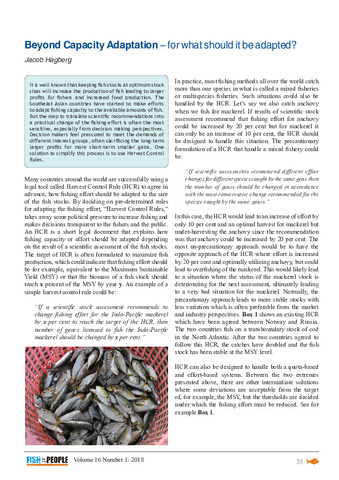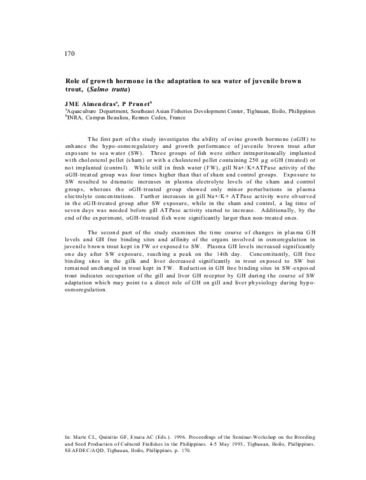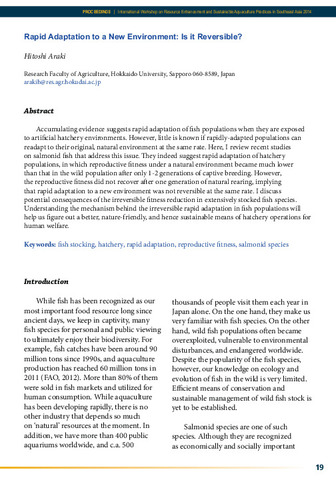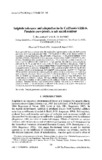Beyond capacity adaptation – for what should it be adapted?
Share
Abstract
It is well known that keeping fish stocks at optimum stock sizes will increase the production of fish leading to larger profits for fishers and increased food production. The Southeast Asian countries have started to make efforts to adapt fishing capacity to the available amounts of fish. But the step to translate scientific recommendations into a practical change of the fishing effort is often the most sensitive, especially from decision making perspectives. Decision makers feel pressured to meet the demands of different interest groups, often sacrificing the long-term larger profits for more short-term smaller gains. One solution to simplify this process is to use Harvest Control Rules.
Suggested Citation
Hagberg, J. (2018). Beyond capacity adaptation – for what should it be adapted? Fish for the People , 16(1), 37-38. http://hdl.handle.net/20.500.12066/1358
Subject
Adaptations; fishing effort  ; fish
; fish  ; stocks
; stocks  ; fishing capacity
; fishing capacity  ; fishing
; fishing  ; Profits; fishers
; Profits; fishers  ; South East Asia
; South East Asia
 ; fish
; fish  ; stocks
; stocks  ; fishing capacity
; fishing capacity  ; fishing
; fishing  ; Profits; fishers
; Profits; fishers  ; South East Asia
; South East Asia
Collections
Related items
Showing items related by title, author, creator and subject.
-
Role of growth hormone in the adaptation to sea water of juveline brown trout, (Salmo trutta)
Almendras, J. M. E.; Punet, P. (Aquaculture Department, Southeast Asian Fisheries Development Center, 1996)The first part of the study investigates the ability of ovine growth hormone (oGH) to enhance the hypo-osmoregulatory and growth performance of juvenile brown trout after exposure to sea water (SW). Three groups of fish ... -
Rapid adaptation to a new environment: is it reversible?
Araki, Hitoshi (Aquaculture Department, Southeast Asian Fisheries Development Center, 2015)Accumulating evidence suggests rapid adaptation of fish populations when they are exposed to artificial hatchery environments. However, little is known if rapidly-adapted populations can readapt to their original, natural ... -
Sulphide tolerance and adaptation in the California killifish, Fundulus parvipinnis, a salt marsh resident
Bagarinao, Teodora; Vetter, R. D. (Wiley-Blackwell, 1993)Hydrogen sulphide is a toxicant naturally produced in hypoxic marine sediments, hydrocarbon and brine seeps and hydrothermal vents. The California killifish, a salt marsh resident, is remarkably tolerant of sulphide. The ...




